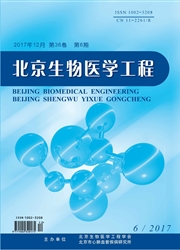

 中文摘要:
中文摘要:
目的为深入了解DXA、力学测试和矿盐含量在航天骨丢失研究的应用,本文比较了这三种方法评估大鼠股骨性能的精确性,并比较了大鼠股骨在活体、离体和冷冻三种情况下的DXA测量差别。方法选择3只雄性SD大鼠,首先对其两侧股骨进行DXA测量,得到活体、离体和冷冻三种情况的骨矿密度(BMD),然后进行力学测试和矿盐含量测试。结果DXA、力学测试和矿盐含量的变异系数(CV)分别为7.5%-8.5%,10.1%-17.1%和0.8%。对于DXA测量,活体股骨BMD值与离体和冷冻股骨BMD值都有极其显著差别(P〈0.001),而离体与冷冻股骨BMD值无显著性差别。结论矿盐含量精确性好于DXA和力学测试。DXA测量活体与离体骨骼差别很大,冷冻不会影响DXA测量。
 英文摘要:
英文摘要:
Objective To further understand the applications of DXA, mechanical testing and mineral content methods on the research of hone loss in spaceflight, this work compared the precisions of the three methods in evaluating the femoral properties of rats, and the difference among in vivo, ex vivo and freezing femurs with DXA Methods Six femurs of three male Spragne-Dawley rats were scanned on a DXA scanner to measure the in vivo, ex vivo and freezing Bone Mineral Density (BMD). Then mechanical testing and mineral content measurements were performed. Results The values of the coefficient of variation (CV) in cases of DXA, mechanical testing and mineral content are 7.5% - 8.5% , 10.1% - 17.1% and 0.8% , respectively. To DXA measurement, there are extreme significances of differences both between the in vivo and the ex vivo femoral BMD values, and the in vivo and the freezing femoral BMD values (P 〈 0. 001 ) , however no significance of difference between the ex vivo and the freezing femoral BMD values. Conclusion The precison of mineral content method is better than DXA and mechanical testing methods. DXA measurement of in vivo bone is very different with that of ex vivo bone, but freezing doesn' t influence the results of DXA measurement.
 同期刊论文项目
同期刊论文项目
 同项目期刊论文
同项目期刊论文
 Atlas-Based Fuzzy Connectedness Segmentation and Intensity Nonuniformity Correction Applied to Brain
Atlas-Based Fuzzy Connectedness Segmentation and Intensity Nonuniformity Correction Applied to Brain A parallel reconstruction scheme in fluorescence tomography based on contrast of independent inverse
A parallel reconstruction scheme in fluorescence tomography based on contrast of independent inverse Comparison of isotropic and orthotropic material property assignments on femoral finite element mode
Comparison of isotropic and orthotropic material property assignments on femoral finite element mode A fast reconstruction algorithm for fluorescence optical diffusion tomography based on pre-iteration
A fast reconstruction algorithm for fluorescence optical diffusion tomography based on pre-iteration A Penalized Linear and Nonlinear Combined Conjugate GradientMethod for the Reconstruction of Fluores
A Penalized Linear and Nonlinear Combined Conjugate GradientMethod for the Reconstruction of Fluores Development and Validation of a Finite Element Model of the Occipito-Atlantoaxial Complex Under Phys
Development and Validation of a Finite Element Model of the Occipito-Atlantoaxial Complex Under Phys Reconstruction for free-space fluorescence tomography using a novel hybrid adaptive finite element a
Reconstruction for free-space fluorescence tomography using a novel hybrid adaptive finite element a 期刊信息
期刊信息
